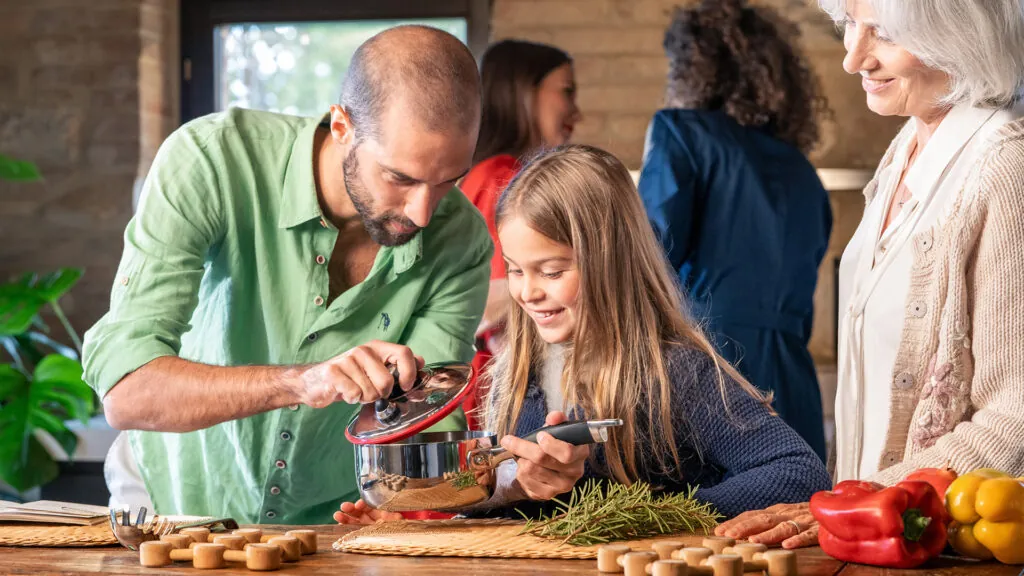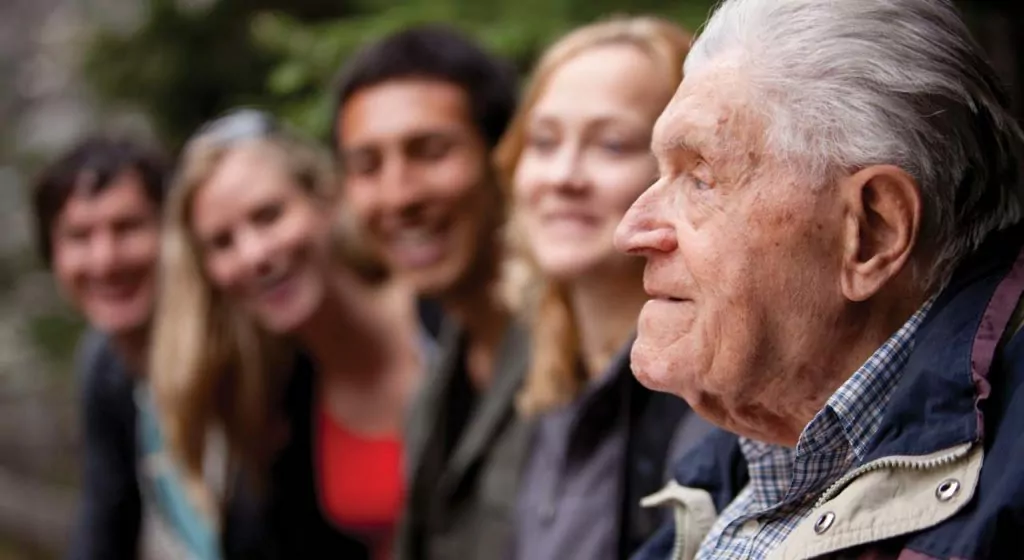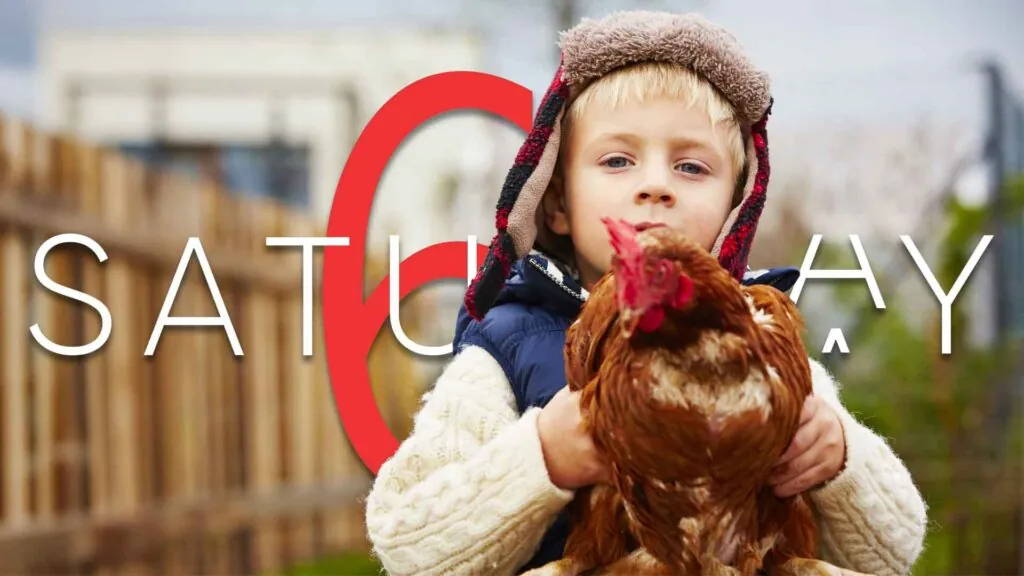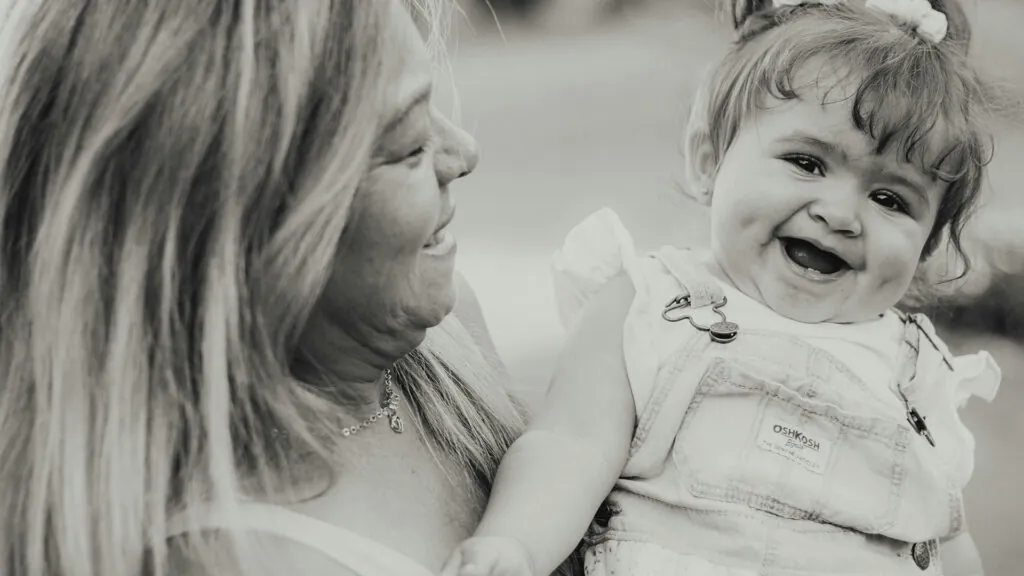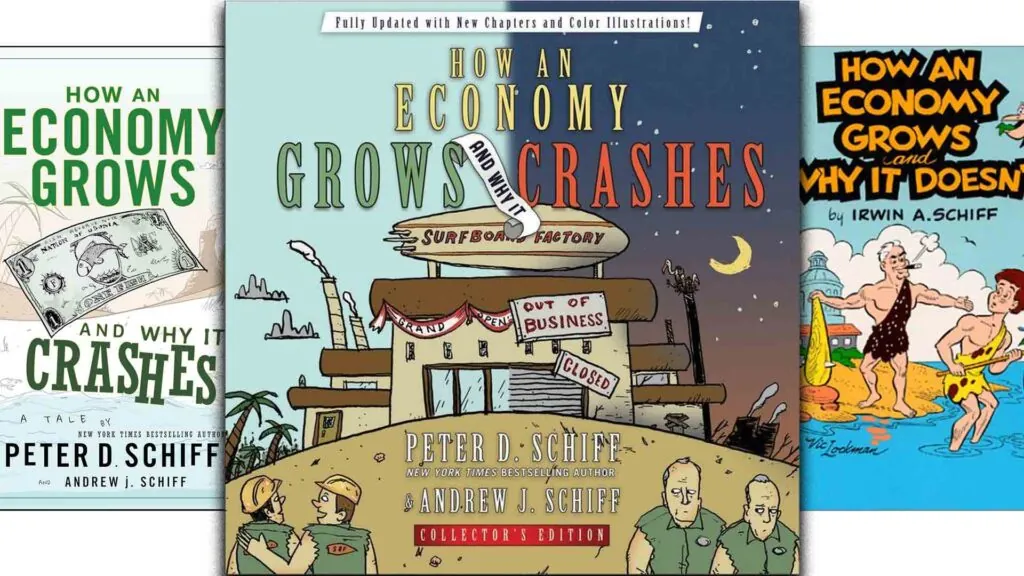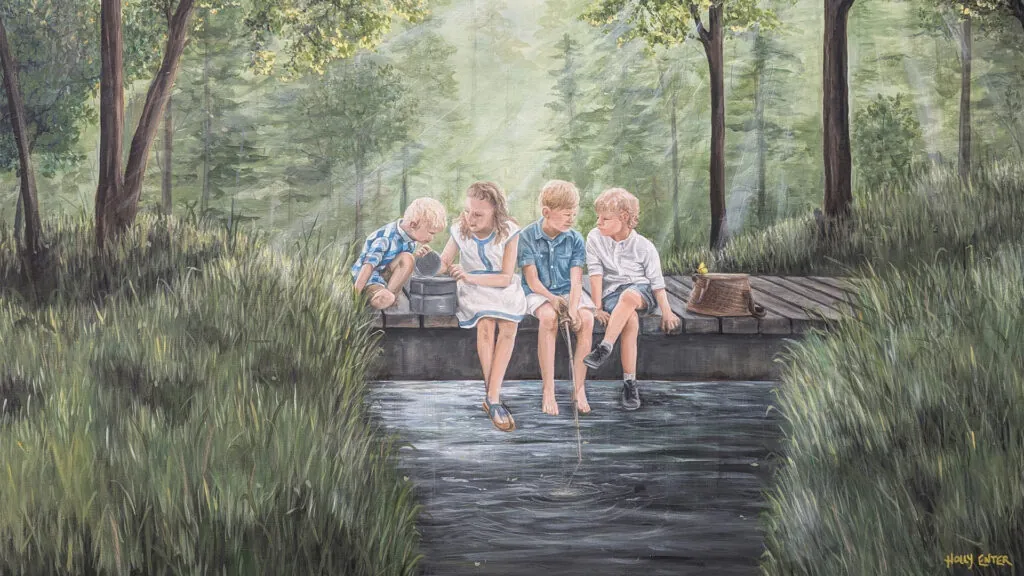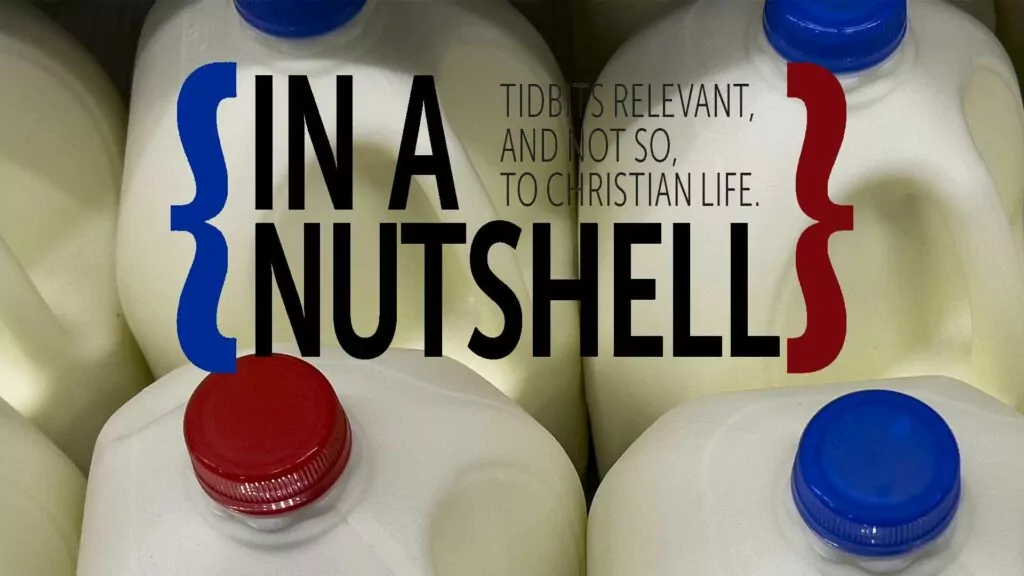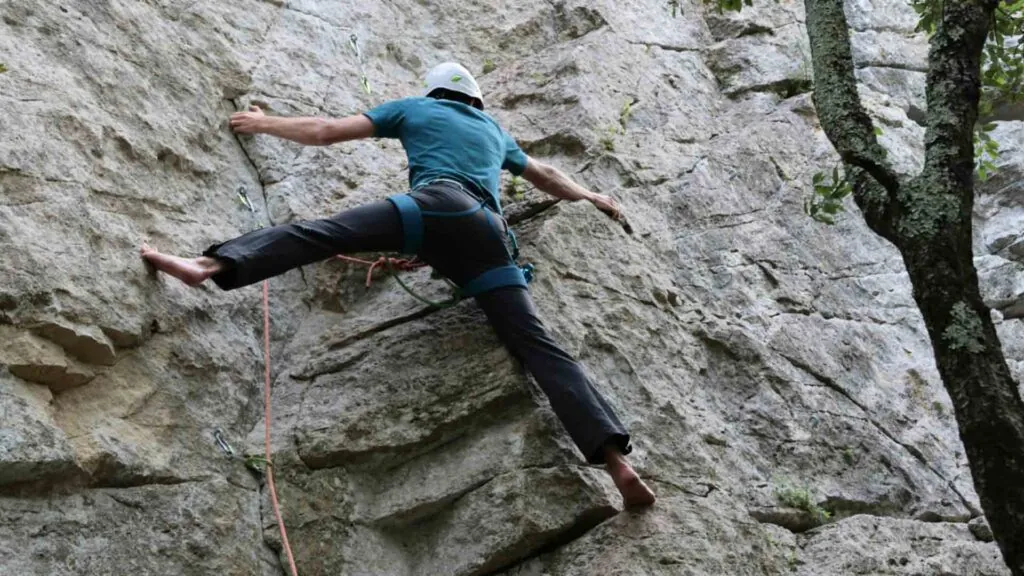
Assorted
In Christ
The antidote to works righteousness and the anxiety, exhaustion, and resentment that comes with it.
*****
I used to enjoy rock climbing. At least, I thought I did.
If you’ve tried it, you know what it feels like to be 50 feet up a cliff, clutching any hold thicker than the edge of a loonie. I would normally “top-rope,” which involved my brother belaying from the bottom and the rope running through a carabiner at the top and back down to my harness. If I fell, my brother ensured that I wouldn’t fall far.
But there were occasions when we couldn’t get a rope to the top and would have to “lead climb.” The climber would take the rope up as he climbed, and, using carabiners and a sling, secure it to bolts that were drilled into the cliff, usually about every 10 feet. So, if you climbed 10 feet past a bolt and were almost at the next one, you knew that a fall at that point would send you, not just to the next bolt, but 10 feet beyond it. Even if the belayer was holding the rope firmly, he couldn’t stop you from falling 20 feet! You were on your own.
Even if my mind was willing, it was when I needed the most stability and strength that my body would sometimes rebel and stiffen or shake uncontrollably. It wasn’t enough to be determined. My body didn’t cooperate with my mind. And then my mind would soon lose faith. As much as I wanted it, there was no way I could simply will myself into being able to do this – there was going to be no summit. And if I insisted on trying, there may have even been a painful fall.
Lead-climbing life
In many ways, the same has been true of my effort to live as a Christian. Perhaps you can identify.
From our youth we are urged to “become like Christ.” WWJD or “What would Jesus do?” is ringing in many ears. Perhaps it is a Bible passage like “I press on toward the goal to win the prize for which God has called me” (Phil. 3:14) or maybe a doctrine we were instructed in, such as our calling to be a prophet, priest, and king (Lord’s Day 12, Heidelberg Catechism). The underlying message we hear from many pulpits, classrooms, and dinner tables is “you confess to being a Christian, now act like it!”
Throughout my life, I have been trying to make progress towards the LORD. One foot hold at a time, I have been striving to overcome fear and failure and make it to the summit.
But like my twitching body on the cliff, I have been humbled time and again. As much as I willed to make progress, my body was weak. “Step it up, Mark!” I told myself time and again. As I shared in a previous article on anxiety, eventually I burnt out. I got to the point where I felt like I could barely move, let alone summit anything. It is a horrible feeling to be a father, husband, and leader, and yet incapable of basic functioning.
That was about 8 years ago. My journey with understanding anxiety and stress has been ongoing, and I have been blessed with many helpful resources. But beneath it all I have discovered a spiritual root – I was trying to earn God’s favor, to measure up, to prove my status as His child. Yes, I understand what grace means, and I’m convinced that I can be justified only by faith alone, in Christ alone. I’ve clipped my rope into these spiritual truths again and again, and then tried to keep climbing up, towards the summit. But it doesn’t take long before I’m weary, restless, or anxious again. Then I’m left shaking on the side of the cliff.
It has taken me too long to realize the answer has been close at hand all my life. It is captured in many places in Scripture, including:
- “There is therefore now no condemnation for those who are in Christ Jesus.” (Rom. 8:1)
- “I have been crucified with Christ. It is no longer I who live, but Christ who lives in me.” (Gal. 2:20)
- “...to put off your old self, which belongs to your former manner of life and is corrupt through deceitful desires, and to be renewed in the spirit of your minds, and to put on the new self, created after the likeness of God in true righteousness and holiness.” (Eph. 4:22-24)
- “For in Christ Jesus you are all sons of God, through faith. For as many of you as were baptized into Christ have put on Christ.” (Gal. 3:26-27)
The theme of being “in Christ” is immersed throughout the New Testament. When Paul refers to himself, he doesn’t call himself a Christian. Rather, he calls himself a “man in Christ” (2 Cor. 12:2).
Christ himself draws this out in John 15 when He describes how He is the true vine and we are branches.
“Abide in me, and I in you. As the branch cannot bear fruit by itself, unless it abides in the vine, neither can you, unless you abide in me” (John 15:4).
The branch doesn’t grow itself and then find a vine or branch to attach itself to and form a partnership with. We find our life wholly in Christ. He initiates the growth, He sustains with His life-giving water, and He carries us through the winds and storms of life.
“Jesus does not call us to mimic him but to manifest Him,” explains Steve Cuss, in his book Managing Leadership Anxiety. In my leadership and writing, as well as my parenting, I have constantly gotten this wrong. And the challenges I see in the Christian community suggest that I’m the norm, not the exception. “Becoming like Christ is what God does in us, not what we do. God is the active agent; we are the recipients,” explains Cuss (emphasis added).
But isn’t there something we need to do? Cuss points to Scripture and explains that our first task is something we aren’t usually that keen to do: to die to our old self (Rom. 6:6, Eph. 4:22-24, Col. 3:5-10). That includes the age-old propensity to purse these false needs:
- Control
- Perfection
- Always having the answer
- Being there for everyone in need
- Approval
The truth is that these are attributes of God, not us. He is in control. He is perfect. He knows everything. He is there for everyone. And He give us our approval.
As Steve Cuss explains, “anytime a human being tries to take on a God-sized job, we get reactive.” Feeling stressed lately? Perhaps, like me, you are trying to become like God rather than living in Christ. Like many other Christians, I have spent much of my life trying to be faithful, while not experiencing the peace that Christ promises us when we abide in Him.
Reformed Perspective’s core purpose
Every healthy organization should have a clearly-articulated reason for being. At our December board meeting, the board of Reformed Perspective settled on this core purpose:
Helping you think, speak, and act in Christ.
This flows from our mission statement of “equipping and encouraging Christians to think, speak, and act in a manner consistent with their confession.” But hopefully you can also distinguish the nuance of the last two words. Instead of encouraging Christians to “step it up” by living in line with what we confess, the new focus is on thinking, speaking, and acting in Christ.
We think, speak, and act not to become like Christ. Rather, like a branch that produces fruit, our good works happen because we are connected to the Vine. We already are in Christ. We already are accepted. We already are loved. I don’t have to climb toward God’s favor. I don’t have to fear my next slip and fall. Christ has already summitted for me and is holding me firmly while I complete my journey.
We humbly invite you, our readers and listeners, to hold us accountable to our stated purpose, as we seek to assist you in thinking, speaking, and acting in Christ.












